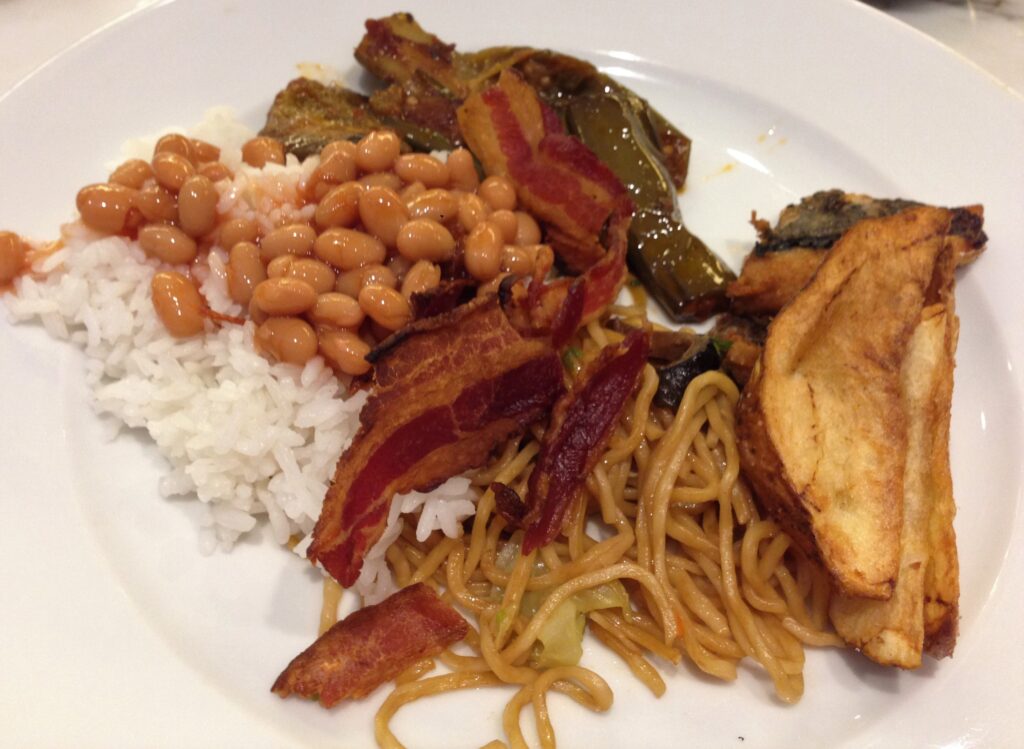Text and Photos by Henrylito D. Tacio
Which is better for people with type 2 diabetes who want to control weight and blood sugar: eating two large meals or eating six small ones with the same amount of calories?
It’s the former, according to the results of the new study conducted by Prague’s Diabetes Center in the Czech Republic. Diabetologia, the journal of the European Association for the Study of Diabetes, published the study.
“We’ve turned the common wisdom, that eating little and often is best, upside down,” Dr. Hana Haleova, the lead author of the study, told Medscape Medical News. “Mostly it has been recommended for people with type 2 diabetes to eat 5 or 6 small meals a day, but in Western societies at least, it turns out that snacks are not healthy, they are high in sugar and fat. So a regimen of frequent eating hasn’t resulted in better control.”
According to WebMD Health News, the study looked at 54 patients, 29 men, and 25 women. All were taking oral medications for diabetes. The patients were between 30 and 70 years old and were divided into two groups of 27. They were asked to follow one of two restricted-calorie diets for 12 weeks. After completing one diet, they switched to the other, again for 12 weeks.
Each diet contained 500 calories fewer than the recommended daily amount. One included six small meals: breakfast, lunch, dinner, and three small snacks. The other included two large meals: breakfast eaten between 6 and 10 a.m. and lunch between noon and 4 p.m.

Merienda 
Delicious eggplant
The diets had the same calories and nutrients.
Dr. Kahleova reported that within three months, those who ate larger meals twice a day lost 1.4 kilos more than those who followed the classic model.
“Levels of sugar, insulin and glucagon on an empty stomach also fell more rapidly in patients who ate in the morning and at midday, and their sensibility to insulin also improved,” she explained.
In a statement, Richard Elliott, research communications officer at Diabetes UK, said that more research is still needed before people with diabetes change their eating habits.
“What we do know is that eating a healthy balanced diet, taking regular physical activity and maintaining a healthy weight, together with taking any medication prescribed by your doctor, is vital for effective management of type 2 diabetes,” Elliott pointed out.
A disorder of the body’s power supply system, diabetes is a slow-moving calamity that profoundly disturbs every cell in the body. At the core, it’s the failure of cells to absorb glucose, the sugar molecules that fuel muscles, nerves, and the brain. When sugar cannot enter the cells, it builds up in the blood, leading over time to devastating complications: heart attack, stroke, kidney failure, nerve damage, even limb amputation, and blindness.

The pancreas, which lies deep in the belly behind the stomach, virtually on our backbone, makes the insulin, which regulates sugar metabolism. In type 1 diabetes — also called insulin-dependent diabetes mellitus — there is very little insulin around because the special cells that produce it within the pancreas have been destroyed by the body.
Type 2 diabetes is the most common form of the disease. As it involves insulin resistance, it is also called non-insulin-dependent diabetes mellitus. A person may be making insulin, but his body is not using it properly. This type comes on gradually, making it difficult to detect.
At one time, type 2 diabetes was called adult-onset diabetes; nearly all its victims were over 30. But now, type 2 affects children as young as four. “The predisposition for developing Type 2 diabetes is inherited,” writes Elizabeth Hiser, a journalist who writes for The New York Times, “and there are three factors that cause the disease to surface: being overweight, inactivity, and advancing age.”
“If you look at the spread of the scourge around the world, Type 2 diabetes occurs as a country advances technologically, when people come out of the fields to sit behind desks,” notes Dr. Irwin Brodsky, director of the Diabetes Treatment Program at the University of Illinois in Chicago.
Type 2 is the strain most people have to fear. This is the real epidemic, accounting for 85-90 percent of diabetes cases in the country. “Getting diagnosed early is important because most of its serious complications are preventable,” assures Dr. Marie Yvette Rosales-Amante, who had her fellowship in endocrinology, diabetes, and metabolism at the University of Massachusetts.

